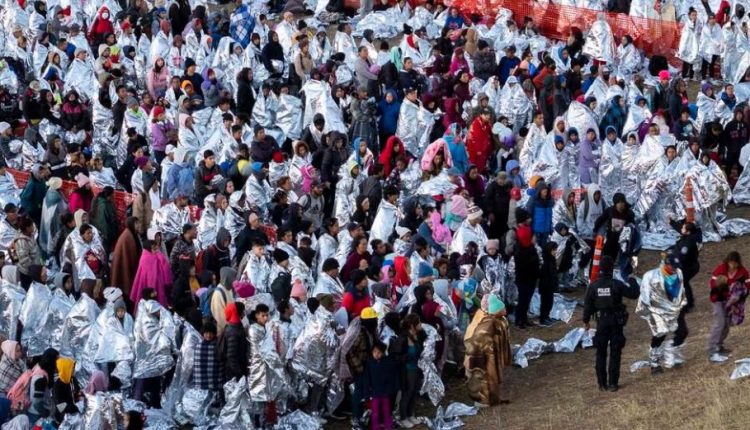Asylum-Seeker Housing in Chicago Faces Complications Amid Freezing Conditions
As freezing temperatures grip Chicago, dozens of asylum-seekers find refuge in the lower level of a library, highlighting the ongoing struggle of the city to address the growing influx of migrants.
While makeshift solutions, such as parked city buses and police station lobbies, have been employed as temporary shelters, the lack of a comprehensive long-term plan has left volunteers, nonprofit groups, and migrants uneasy, especially during the harsh winter months.
Winter Migrant Shelter: Challenges Amidst Long-Term Planning Gaps
Chicago’s response to the migrant crisis has been marked by a haphazard approach, relying heavily on volunteers who have tirelessly provided medical care, food, and donated items for over a year.
The city, like others such as New York and Denver, has faced challenges in dealing with the crisis that began in 2022, exacerbated by the arrival of migrants directed by Texas Governor Greg Abbott.
The situation in Chicago has garnered attention for its lack of a clear strategy, with city leaders grappling with evolving circumstances and facing criticism for the use of temporary measures. Mayor Brandon Johnson’s proposal for a heated tent encampment was scrapped due to concerns about contaminants at the chosen industrial site. Additionally, the city’s 60-day limit on shelter stays faced delays, now set to go into effect on February 1, amid harsh weather conditions.
The political battle has spilled into the suburbs, with Governor Abbott’s busing operation dropping off migrants without coordination, leading to fines and lawsuits from the city. Despite Mayor Johnson’s attempts to convene a summit with suburban mayors, it was canceled due to weather conditions.
The international crisis has prompted calls for federal intervention, as local governments bear the burden of subsidizing the work not originally designed for them.
Illinois Governor J.B. Pritzker’s plea to suspend buses until temperatures rise and provide winter necessities for arriving migrants was rejected by Governor Abbott, who emphasized the need for federal involvement.
Over 33,000 migrants, primarily from Venezuela, have arrived in Chicago since 2022, with nearly 15,000 currently housed in 28 shelters. The city has also offered bus tickets to migrants willing to relocate.
Chicago Evolving Migrant Shelter Landscape

While Chicago phased out the use of police stations for housing migrants, O’Hare International Airport remains in use, accommodating asylum-seekers for extended periods.
The recent utilization of city buses and the construction of heated tents near a downtown highway raise questions about the adequacy of the city’s plans for the future.
Marilyn Gonzalez, who experienced the crowded and stressful conditions aboard city buses, described feeling like a prisoner, emphasizing the emotional toll on children and families.
The uncertainty surrounding the city’s plans as weather conditions improve adds to the anxiety of those seeking shelter in Chicago.
As the city grapples with the ongoing migrant crisis, the need for a comprehensive and sustainable long-term plan becomes increasingly apparent.
The collaboration between federal, state, and local authorities, along with community support, is crucial to addressing the immediate challenges and creating a more stable environment for asylum-seekers in Chicago.

